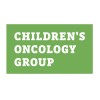
Combination Chemotherapy in Treating Children With Neuroblastoma
NeuroblastomaRATIONALE: Drugs used in chemotherapy use different ways to stop tumor cells from dividing so they stop growing or die. Combining more than one drug may kill more tumor cells. Combination chemotherapy plus surgery may be an effective treatment for neuroblastoma. PURPOSE: This phase III trial is studying how well combination chemotherapy followed by surgery works in treating young patients with neuroblastoma.

Surgery in Treating Children With Neuroblastoma
NeuroblastomaRATIONALE: Surgery alone may be effective in treating children with neuroblastoma. PURPOSE: Phase III trial to study the effectiveness of surgery alone in treating children who have neuroblastoma.

Combination Chemotherapy or Observation Following Surgery in Treating Infants With Neuroblastoma...
NeuroblastomaRATIONALE: Sometimes neuroblastoma will regress without treatment, but sometimes additional treatment may be necessary. Giving more than one chemotherapy drug after surgery to remove the tumor may kill more tumor cells. PURPOSE: Phase II trial to study combination chemotherapy or observation following surgery in treating infants with neuroblastoma.

Arsenic Trioxide in Treating Patients With Advanced Neuroblastoma or Other Childhood Solid Tumors...
Brain and Central Nervous System TumorsChildhood Germ Cell Tumor7 moreRATIONALE: Drugs used in chemotherapy use different ways to stop tumor cells from dividing so they stop growing or die. PURPOSE: Phase II trial to study the effectiveness of arsenic trioxide in treating children who have advanced neuroblastoma or other solid tumors.

Combination Chemotherapy and Peripheral Stem Cell Transplantation in Treating Patients With Neuroblastoma...
NeuroblastomaRATIONALE: Drugs used in chemotherapy use different ways to stop tumor cells from dividing so they stop growing or die. Combining chemotherapy with peripheral stem cell transplantation may allow the doctor to give higher doses of chemotherapy drugs and kill more tumor cells. PURPOSE: This randomized phase III trial is studying peripheral stem cell transplantation with treated peripheral stem cells following combination chemotherapy to see how well it works compared to peripheral stem cell transplantation with untreated peripheral stem cells following combination chemotherapy in treating patients with neuroblastoma.

Carboplatin and Vincristine Plus Radiation Therapy Followed By Adjuvant Chemotherapy in Treating...
Brain TumorsCentral Nervous System Tumors1 moreRATIONALE: Drugs used in chemotherapy, such as carboplatin and vincristine, work in different ways to stop tumor cells from dividing so they stop growing or die. Radiation therapy uses high-energy x-rays to damage tumor cells. Combining carboplatin and vincristine with radiation therapy followed by adjuvant chemotherapy may kill more tumor cells. PURPOSE: Randomized phase II trial to study the effectiveness of combination chemotherapy plus radiation therapy followed adjuvant chemotherapy in treating young patients who have newly diagnosed high-risk CNS embryonal tumors.

Vinorelbine in Treating Children With Recurrent or Refractory Cancers
Brain and Central Nervous System TumorsNeuroblastoma1 moreRATIONALE: Drugs used in chemotherapy use different ways to stop tumor cells from dividing so they stop growing or die. PURPOSE: Phase II trial to study the effectiveness of vinorelbine in treating children with recurrent or refractory cancer.

Racotumomab in Patients With High-risk Neuroblastoma
NeuroblastomaThis clinical trial will be carried out in children diagnosed with high-risk neuroblastoma that have achieved a complete or very good partial response after standard therapy. An additional cohort of children who could not achieve these response criteria or that relapsed after standard therapy but do not have progressive disease will receive Racotumomab together with metronomic chemotherapy. The main objectives of this study are to determine the immune response after one-year duration immunization with Racotumomab, to describe the response of Racotumomab therapy in minimal residual disease (MRD) in bone marrow and to describe the toxicity profile of Racotumomab.

Lorvotuzumab Mertansine in Treating Younger Patients With Relapsed or Refractory Wilms Tumor, Rhabdomyosarcoma,...
Pleuropulmonary BlastomaRecurrent Malignant Peripheral Nerve Sheath Tumor4 moreThis phase II trial studies how well lorvotuzumab mertansine works in treating younger patients with Wilms tumor, rhabdomyosarcoma, neuroblastoma, pleuropulmonary blastoma, malignant peripheral nerve sheath tumor (MPNST), or synovial sarcoma that has returned or that does not respond to treatment. Antibody-drug conjugates, such as lorvotuzumab mertansine, are created by attaching an antibody (protein used by the body?s immune system to fight foreign or diseased cells) to an anti-cancer drug. The antibody is used to recognize tumor cells so the anti-cancer drug can kill them.

A Study of the Safety and Pharmacokinetics of Venetoclax in Pediatric and Young Adult Patients With...
MalignanciesAcute Lymphoblastic Leukemia (ALL)3 moreAn open-label, global, multi-center study to evaluate the safety and pharmacokinetics of venetoclax monotherapy, to determine the dose limiting toxicity (DLT) and the recommended Phase 2 dose (RPTD), and to assess the preliminary efficacy of venetoclax in pediatric and young adult participants with relapsed or refractory malignancies.
